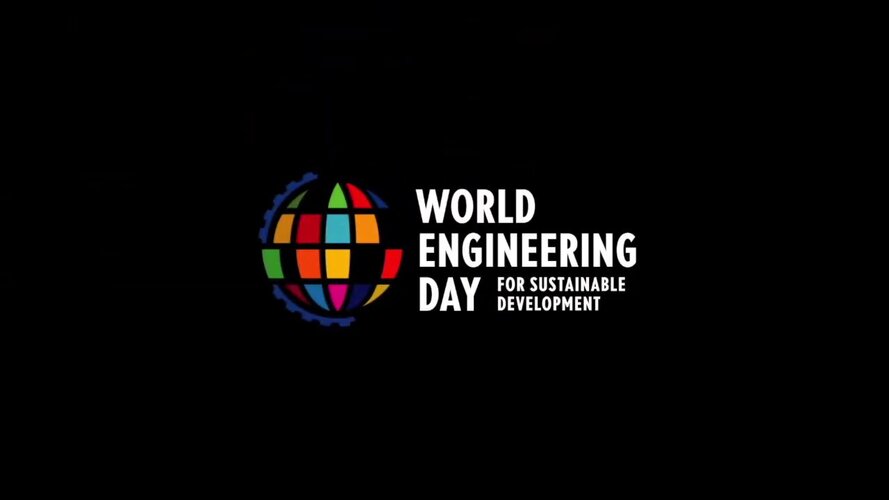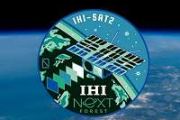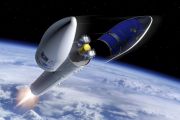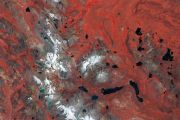
Copernical Team
How space engineering supports sustainable development

What do artificial hearts, crack-free wind turbines, and pig sewage treatments have in common? Perhaps surprisingly, they have all benefitted from technology developed for space.
Microscopic view on asteroid collisions could help us understand planet formation
 A new way of dating collisions between asteroids and planetary bodies throughout our Solar System's history could help scientists reconstruct how and when planets were born.
The research, which was led by the University of Cambridge, combined dating and microscopic analysis of the Chelyabinsk meteorite - which fell to Earth and hit Microscopic view on asteroid collisions could help us unde
A new way of dating collisions between asteroids and planetary bodies throughout our Solar System's history could help scientists reconstruct how and when planets were born.
The research, which was led by the University of Cambridge, combined dating and microscopic analysis of the Chelyabinsk meteorite - which fell to Earth and hit Microscopic view on asteroid collisions could help us unde Sidus Space teams with Aitech Systems to support LizzieSat constellation
 Sidus Space, Inc. (NASDAQ:SIDU), a Space-as-a-Service satellite company focused on commercial satellite design, manufacture, launch, and data collection is pleased to announce a strategic partnership with Aitech Systems to support LizzieSat Constellation.
Through this partnership, Aitech Systems is developing and delivering custom LizzieSat Command and Data Handling (C&DH) flight computers
Sidus Space, Inc. (NASDAQ:SIDU), a Space-as-a-Service satellite company focused on commercial satellite design, manufacture, launch, and data collection is pleased to announce a strategic partnership with Aitech Systems to support LizzieSat Constellation.
Through this partnership, Aitech Systems is developing and delivering custom LizzieSat Command and Data Handling (C&DH) flight computers Using NB-IoT connectivity to boost hybrid terrestrial-satellite networks
 Alif Semiconductor, a global provider of microcontrollers and fusion processors, and IoT satellite operator OQ Technology have signed a memorandum of understanding (MOU) to collaborate on a narrowband internet-of-things (NB-IoT) solution for hybrid terrestrial satellite networking. Alifs fingertip sized, highly integrated cellular enabled IoT devices will allow users to roam freely between mobil
Alif Semiconductor, a global provider of microcontrollers and fusion processors, and IoT satellite operator OQ Technology have signed a memorandum of understanding (MOU) to collaborate on a narrowband internet-of-things (NB-IoT) solution for hybrid terrestrial satellite networking. Alifs fingertip sized, highly integrated cellular enabled IoT devices will allow users to roam freely between mobil Selecting the right structural materials for fusion reactors
 Do two promising structural materials corrode at very high temperatures when in contact with "liquid metal fuel breeders" in fusion reactors? Researchers of Tokyo Tech, YNU and QST now have the answer. This high-temperature compatibility of reactor structural materials with the liquid breeder-a lining around the reactor core that absorbs and traps the high energy neutrons produced in the plasma
Do two promising structural materials corrode at very high temperatures when in contact with "liquid metal fuel breeders" in fusion reactors? Researchers of Tokyo Tech, YNU and QST now have the answer. This high-temperature compatibility of reactor structural materials with the liquid breeder-a lining around the reactor core that absorbs and traps the high energy neutrons produced in the plasma Sols 3403-3404: Tiptoe to the Pediment
 The terrain continues to challenge us as we make our way up onto the Greenheugh pediment. Monday's drive ended sooner than expected when the rover sensed the road was rockier than anticipated, so it paused to wait for further instructions from Earth. In the mean time, we took advantage of this brief pause to 'sniff' the rock field all around us.
First, we took ChemCam and Mastcam of "Tobar
The terrain continues to challenge us as we make our way up onto the Greenheugh pediment. Monday's drive ended sooner than expected when the rover sensed the road was rockier than anticipated, so it paused to wait for further instructions from Earth. In the mean time, we took advantage of this brief pause to 'sniff' the rock field all around us.
First, we took ChemCam and Mastcam of "Tobar NASA begins assembly of Europa Clipper
 When it's fully assembled, NASA's Europa Clipper will be as large as an SUV with solar arrays long enough to span a basketball court - all the better to help power the spacecraft during its journey to Jupiter's icy moon Europa. And just about every detail of the spacecraft will have been hand-crafted.
The assembly effort is already underway in clean rooms at the agency's Jet Propulsion Lab
When it's fully assembled, NASA's Europa Clipper will be as large as an SUV with solar arrays long enough to span a basketball court - all the better to help power the spacecraft during its journey to Jupiter's icy moon Europa. And just about every detail of the spacecraft will have been hand-crafted.
The assembly effort is already underway in clean rooms at the agency's Jet Propulsion Lab A River Runs Through It: Onward to the Delta
 The delta is calling and we must go! With one Earth year in its rearview mirror, the Perseverance rover has been racking up the odometry en route to the site of it's next science campaign. It's been a trip down memory lane since leaving Seitah on Sol 340 (Feb 2, 2022) and retracing our tracks back to the Octavia E. Butler landing site.
Familiar views and rocks greet us like old friends as
The delta is calling and we must go! With one Earth year in its rearview mirror, the Perseverance rover has been racking up the odometry en route to the site of it's next science campaign. It's been a trip down memory lane since leaving Seitah on Sol 340 (Feb 2, 2022) and retracing our tracks back to the Octavia E. Butler landing site.
Familiar views and rocks greet us like old friends as Integrated Deterrence at Center of Upcoming National Defense Strategy
 With China, Russia, Iran and North Korea all pursuing advancements in their own nuclear capabilities, and both China and Russia developing advanced hypersonic weaponry and space capabilities, the United States will continue to rely on nuclear weapons as a central part of its own strategic deterrence. But there will need to be more than just nuclear weapons if the U.S. is to maintain its own secu
With China, Russia, Iran and North Korea all pursuing advancements in their own nuclear capabilities, and both China and Russia developing advanced hypersonic weaponry and space capabilities, the United States will continue to rely on nuclear weapons as a central part of its own strategic deterrence. But there will need to be more than just nuclear weapons if the U.S. is to maintain its own secu Sino-European joint space mission conducts magnetometer extension test
 A China-Europe joint space mission, Solar Wind Magnetosphere Ionosphere Link Explorer (SMILE), has successfully carried out the extension test of its payload magnetometer in Europe, Science and Technology Daily reported Wednesday.
The test shows that the function and performance of the magnetometer subsystem integrated with the payload module meet the mission requirements and that the rese
A China-Europe joint space mission, Solar Wind Magnetosphere Ionosphere Link Explorer (SMILE), has successfully carried out the extension test of its payload magnetometer in Europe, Science and Technology Daily reported Wednesday.
The test shows that the function and performance of the magnetometer subsystem integrated with the payload module meet the mission requirements and that the rese 





























